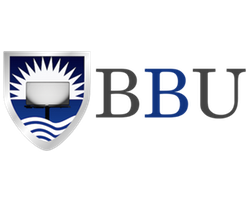Few things frustrate billboard investors more than discovering their sign is obscured by nearby structures, trees, or even another billboard. Neglected signs frequently become available cheaply, often abandoned due to these visual obstructions. So, what's the best approach to identifying these issues—and more importantly, resolving them profitably?
When Ad Revenue Falls Short of Projections
When investing in or building a billboard, you set a specific monthly rental rate expectation. If blockage prevents achieving that target, you’ve identified a serious problem. Occasionally, prime locations may still command full rates despite slight visibility issues. Typically, however, any blockage reducing rental potential demands individual assessment since the impact on revenue varies greatly based on location, advertiser expectations, and market conditions.
When Visibility Doesn't Meet the 400-Foot Standard
Industry standards define adequate billboard visibility as having at least 400 feet of unobstructed viewing distance. At typical highway speeds of around 55 mph, this translates to roughly four seconds of viewing time—enough for most advertisements. While some advertisers might desire visibility from greater distances (like 1,000 feet), these expectations often surpass practical necessity. Still, if the sign fails even the basic 400-foot rule, genuine blockage exists, requiring your immediate attention.
When a Billboard is Completely Hidden from Sight
In markets with dense foliage or taller buildings—think of regions like Atlanta or Houston—billboards are often built higher, visible from far away rather than close-up. Advertisers there frequently use oversized graphics to catch attention from longer distances, willingly sacrificing close-proximity visibility. Here, blockage becomes an accepted norm, but signage must be specifically designed to capitalize on distant viewing.
When Resolving Blockage Doesn't Make Economic Sense
Most blockages are fixable. Raising billboards, trimming or cutting down obstructive trees, or repositioning conflicting signs can all restore visibility. However, each fix carries costs, sometimes including regulatory approval fees. Carefully weigh these expenses against potential revenue gains. I've personally secured visibility rights from neighbors for surprisingly modest sums—once paying only $750 in today's terms to clear a significant tree blockage. Creative negotiation and practicality often yield affordable solutions.
Essential Tip: Address Blockage Before Investing or Building
The ideal scenario is resolving any blockage before purchasing or constructing a billboard. Preemptive action significantly boosts your investment value. Always secure clear, written agreements beforehand; after solving the blockage, the property owner may have little motivation to sell or cooperate without demanding a premium. Addressing obstructions proactively ensures smoother negotiations and maximizes return on investment.
Important Reminder: Trust Your Own Due Diligence
Never rely solely on second-hand opinions about blockage resolution. I once acquired a heavily obstructed billboard in downtown Dallas for a modest $5,000 after everyone else dismissed it as unfixable due to a conflicting parking lot sign. However, the parking lot owner readily agreed to adjust his sign because the billboard also blocked his visibility from the opposite direction. This simple fix turned an overlooked asset into a profitable billboard. Always investigate personally—outside assumptions can lead investors astray.
Conclusion
Effectively recognizing and addressing billboard blockage directly impacts your profitability as an investor. Developing expertise in evaluating visibility problems and executing practical solutions transforms potential losses into considerable gains, ensuring your investment consistently generates strong returns.

